Inside: Get the best start loom knitting by learning from my mistakes. I answer 13 beginner loom knitter questions in this new video series.
Flashback to 9 years ago….
This dream called GoodKnit Kisses got started with a few Knifty Knitter looms and a blanket as a backdrop. I took a risk and published my very first loom knitting tutorial.
I’m the first person to admit that I didn’t have all the answers back then, but I did have some answers. I loved sharing my limited knowledge about different stitches, cast ons and techniques with you.
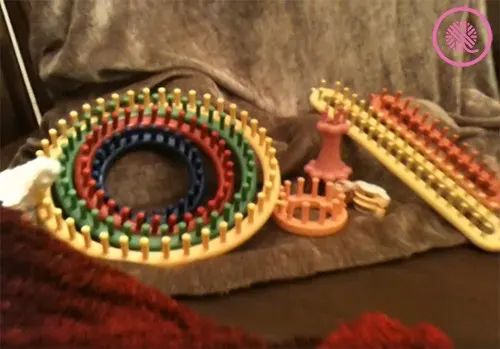
But when I look back at those early videos I think about everything I wish I had known before I got started. My understanding of loom knitting has grown by leaps and bounds in the last decade and I think it’s time take a step back.
Back to the beginning.
I’ve been wanting to create a new beginner loom knitting video series with clearer HD video and improved sound and lighting. (Loom knitting isn’t my only skill that’s improved over the years.)
As I started planning this project I thought about questions I wish I’d known to ask when I was a newbie. There were a lot! I also polled a group of loom knitters to find out what they thought would be useful to learn early on.
This new video series is the result!
The new How To Loom Knit video series is designed like an online class. It will walk you through from the basics of understanding what a loom is to learning cast ons, bind offs and various stitches.
Each lesson builds on the last one until you have the confidence and skill to tackle projects on your own.
To kick off the series I’ve outlined the top questions from beginners below with a brief answer. For a more detailed answer scroll to the bottom and watch the videos.
So, do you want to get the best start loom knitting? The answers to these 13 questions will give you a solid foundation!
Lesson 1.0 – Overview – Looms
1 – What is a knitting loom? How is it similar or different from knitting on needles?
A knitting loom is a tool that allows you to create knit stitches using a series of fixed pegs. Each peg on the loom is equal to one stitch on needles. Your finished knitting looks exactly like it was needle knit.
2 – Why are there so many different looms?
There are different looms to allow you to use a variety of yarn to create stitches and projects of different sizes. From the tiny stitches in a baby sock to the super chunky stitches in an oversized throw they can all be made on a loom.
Knitting looms can vary by:
- Shape – round (circular), long and narrow, rectangular, S-shaped, oval, or even X-shaped. Each one is unique and useful.
- Number of pegs – from tiny looms that only have 5 pegs to huge blanket looms with hundreds of pegs. Since each peg holds one stitch various size looms accommodate different size projects.
- Material – wood, plastic, and metal are all used to make the looms and pegs.
- Function – some looms allow you to double knit, others are adjustable allowing you to increase or decrease the number of pegs you are using. Each loom can be used for a variety of projects, but some have unique features
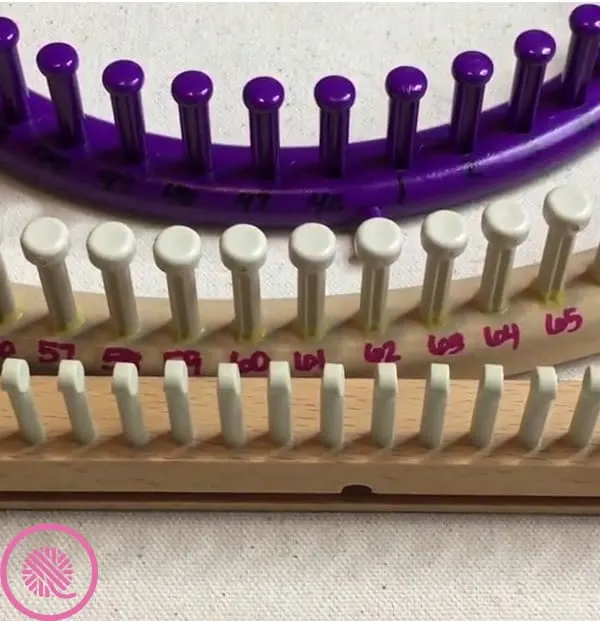
3 – Why all the different shapes?
Some shapes X or S shaped looms allow you fit a greater number of pegs into a small space. The rectangular shape allows some looms to adjust the size of the loom. Some people also prefer one shape over another.
One important thing to note is that the shape of the loom does NOT affect the shape of your project. You can knit the same hat on a round, oval, X-shaped or rectangular loom. It will still be a round hat!
4 – Does it matter how I hold the loom or which direction I knit?
The short answer is that you should hold the loom in the most comfortable position for you! Some people will tell you it’s best to put the loom on a table, or hold it in your lap, or turn it upside down.
None of those are wrong! (Nope, not even holding the loom upside down.)
You’ll find you need to adapt. I hold my loom differently on camera than I do when I’m lounging in my recliner.
You can knit either to the right or left on most patterns. However, as you advance to more complex lace or cable designs you may need to work in a specific direction. I advise beginners to learn how to work both toward the left and right.
5 – Does it matter how I hold the loom tool/pick?
Again, this is a personal preference. Loom tools come in a variety of lengths, thicknesses and grip sizes. The two most common ways to hold a loom pick are gripped firmly in your fist or in a pencil hold using your fingers.
6 – Do I need to use the little peg on the edge of the loom? What if my loom doesn’t have one?
Oh, you mean the anchor peg? It’s used to hold on to your yarn so it doesn’t slip off the pegs while you’re working. Some looms have them, but many do not. It is not essential that you use an anchor peg.
7 – What else do I need to loom knit?
There are some basics, other than a knitting loom and yarn, that are essential learning to loom knit:
- loom tool (also called loom pick or hook)
- scissors
- measuring tape (flexible is best)
- tapestry (yarn) needle (for weaving in ends
There are some other optional items that I discuss on the video, but these are the ones you must have!
get the best start loom knitting with this new video series
Lesson 1.0 Overview Video
Questions 1-7
Lesson 1.1 – Overview – Loom Gauge & Yarn
8 – What is peg spacing or gauge? Why does it matter?
The spacing between the pegs, called loom gauge, determines how big or small the stitches will knit up on that loom. Just like knitting needles come in many sizes so do looms. Instead of switching to a different size needle to adjust the size of our stitches we can use a different gauge loom.
Just know that this spacing or loom gauge, along with the yarn you choose and the stitch you knit all work together to make the final size of the stitches you make which is the final gauge of the knitted fabric. This is the difference in a sweater that is too small or sock that is too big.
The gauge is the measured distance from the center of one peg to the center of the next peg. You see this listed as a fraction of an inch like 3/4″ gauge. We call this measurement the C2C, or center to center.
These C2C measurements are grouped into categories from Extra Fine Gauge to Jumbo gauge. Each category contains several C2C measurements. For example, Small Gauge (SG) cover the range including 5/16″, 3/8″ and 7/16″ loom gauges.
9 – What are looms made of? Does that change the finished project?
Looms are made of wood, plastic or other synthetic materials, or even metal. This does not affect the functionality of the loom or how your project looks at all.
10 – How do I choose a loom for my project?
Choosing the right loom for your project can make the difference between a shawl that drapes across your shoulders like a warm hug or one that looks like the products of deranged, oversized spider.
You need to consider these three factors when choosing a loom:
- the weight of yarn you are using
- the type of project you are making
- how many pegs you will need to make one row/round
All three of these are equally important.
For beginners I recommend using the loom* and yarn suggested in the pattern you are following to guarantee a good result.
* Another loom of the same gauge may be substituted if it has the correct number of pegs. My Knitting Loom Guide is an excellent resource for finding comparable looms!
11 – What is yarn weight? Why are there so many different weights? (I thought yarn was yarn!!)
Yarn weight groups yarn by the thickness of the strand. The Craft Yarn Council determined 8 weight categories for yarn from lace weight to jumbo.
Lace weight (#1), as it sounds, is perfect for delicate shawls and doilies while Super Bulky (#6) makes the best thick warm cowls for the coldest winters. The most common weights used by loom knitters are Medium (#4) and Bulky (#5).
12 – How do I know what yarn to use on my loom?
This may seems like a simple question, but there’s a ton that goes into choosing yarn! Common answers you will hear to this include:
- Only buy whatever is on sale.
- Use only 100% wool.
- You may only use the yarn listed in the pattern.
- Always your favorite color so you’ll want to wear what you knit.
I explain this more in the video, but you should use yarn that is the appropriate size for the loom gauge and the project. I use a huge variety of yarn weights, fibers and types but I always make sure it will knit properly on the loom I’m using. For example, I wouldn’t use a Bulky weight yarn on a sock loom because the loom gauge is too small to knit that yarn properly and easily.
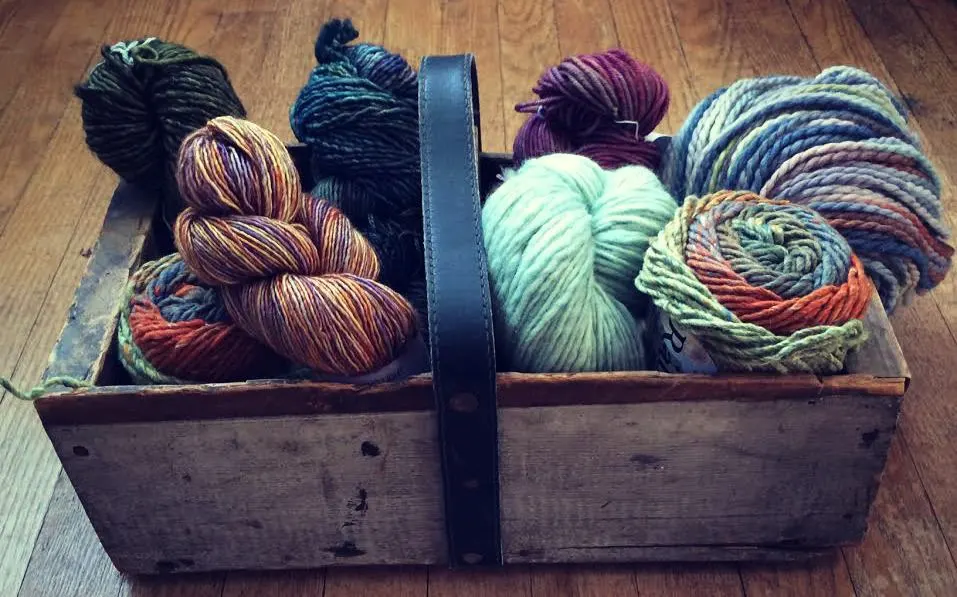
13 – What is a swatch and do I really have to make one?
A swatch is simply a small sample of the stitch you want to use using your chosen yarn and loom.
Swatching the best way to be sure the loom, yarn and stitch pattern you plan to make work well together.
You don’t have to make a swatch for every project. If you stick with the loom and yarn listed in the pattern you will very likely get a good result. But if you want to start changing the loom gauge or yarn, do yourself a favor and swatch!
Lesson 1.1 Overview Video
Questions 8-13
get the best start loom knitting with this new video series
PIN IT!
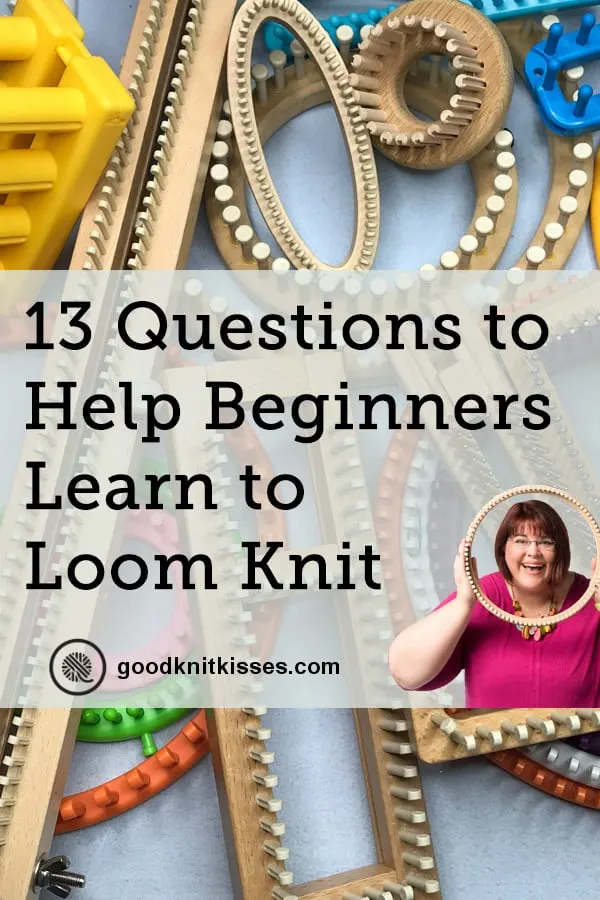
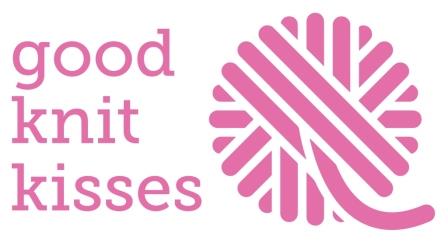
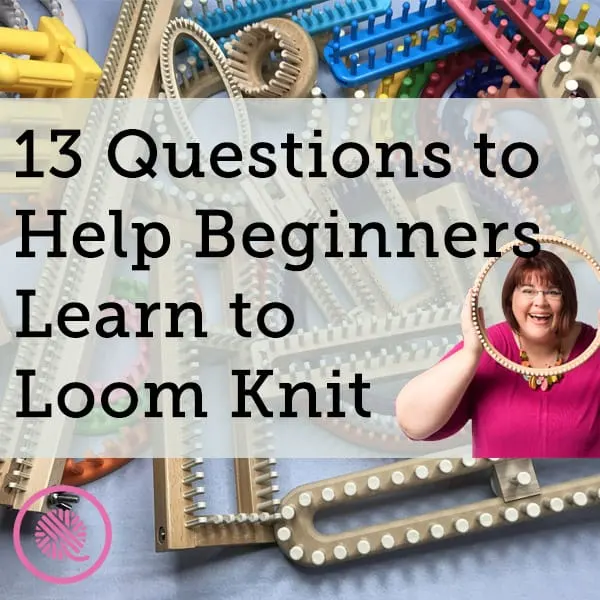
Rosemary
Wednesday 12th of February 2025
It's been a long time since I made anything need a refresher
Brenda Kropp
Saturday 8th of February 2025
Just starting out and loving loom knitting!!
Sheri
Wednesday 8th of January 2025
Thanks for posting information again:)
Paula
Saturday 21st of September 2024
thank you for letting me sign up for your newsletter. Paula
Chad Harris
Tuesday 9th of July 2024
Chad yarn good ? loom knitting